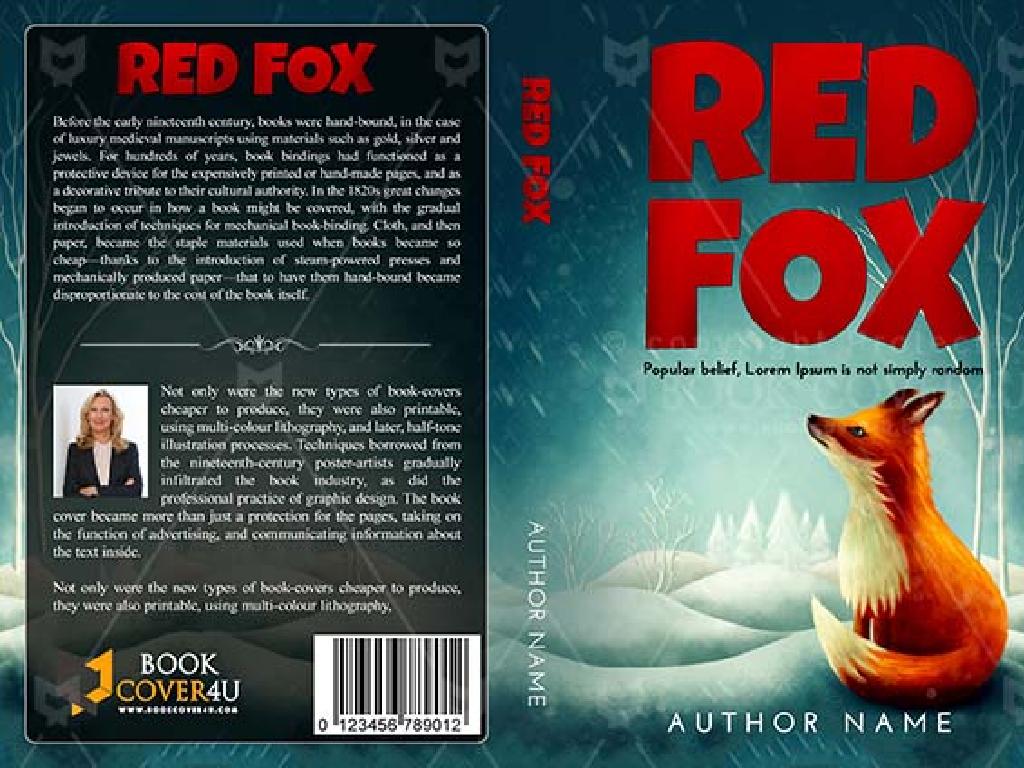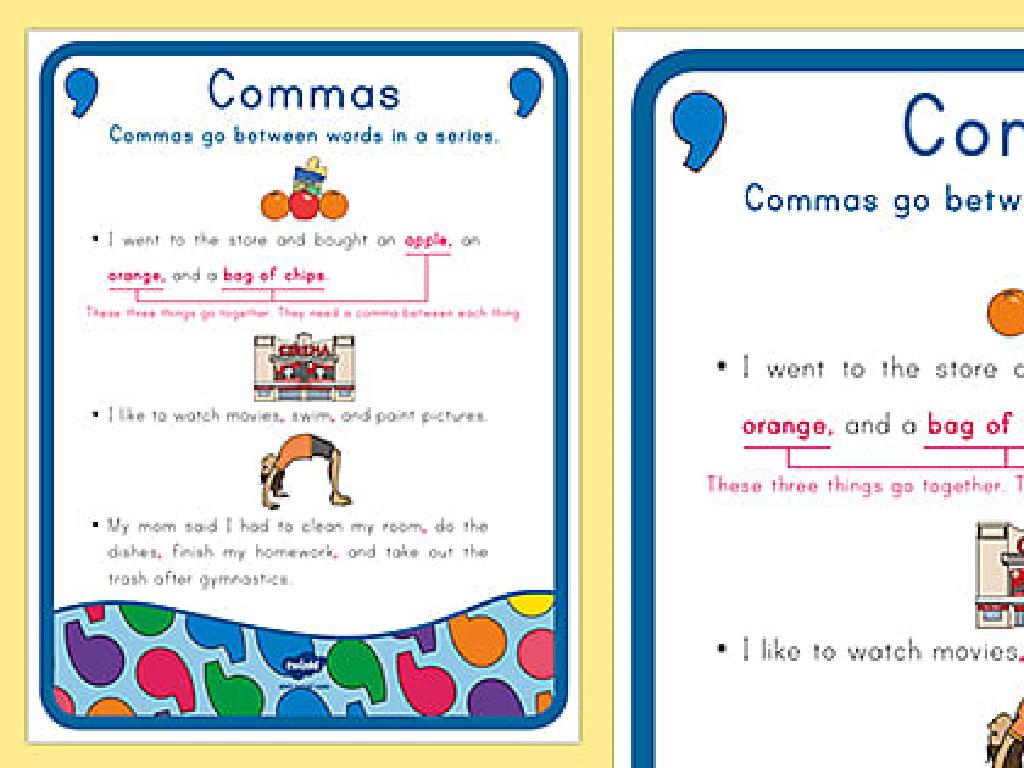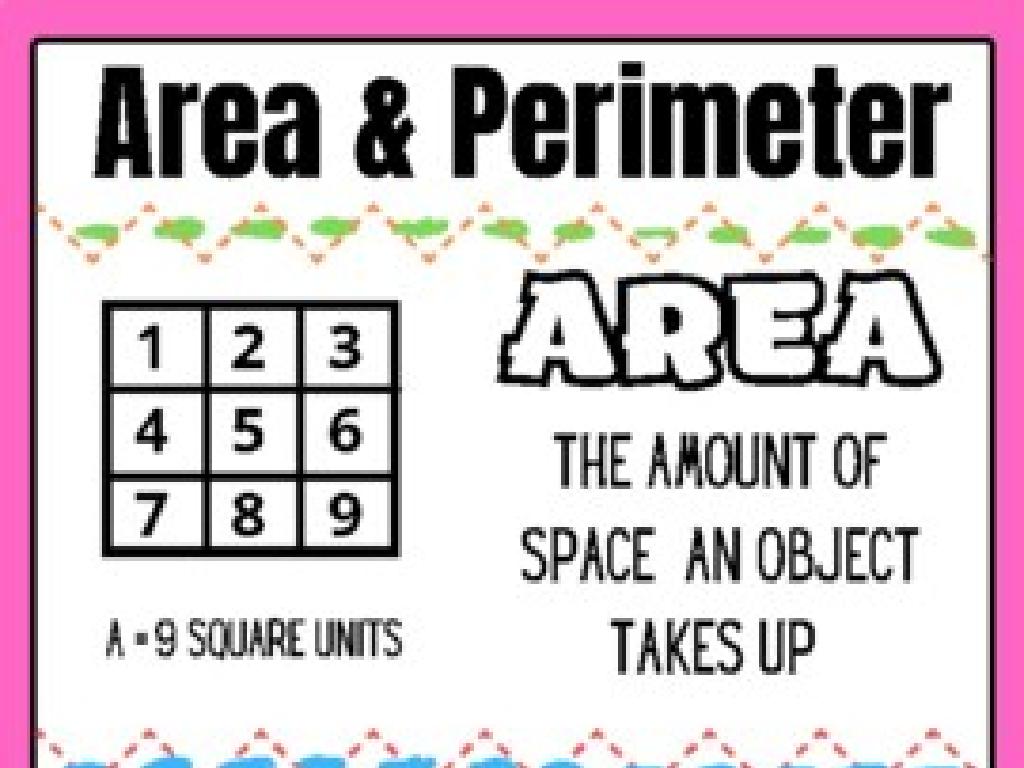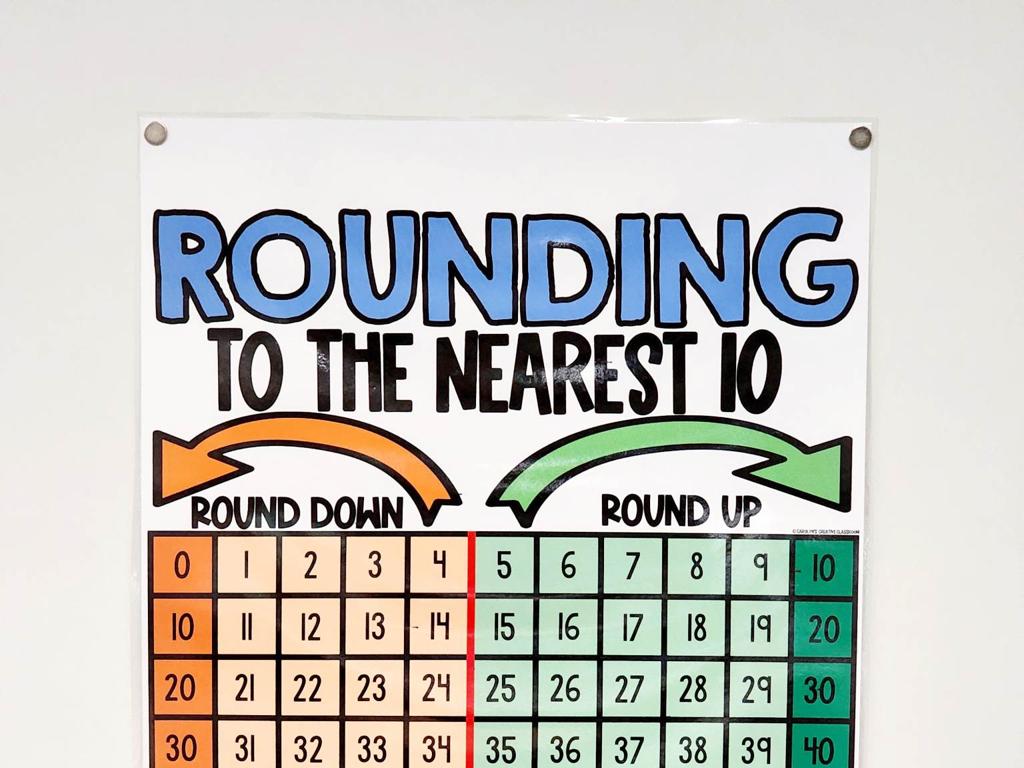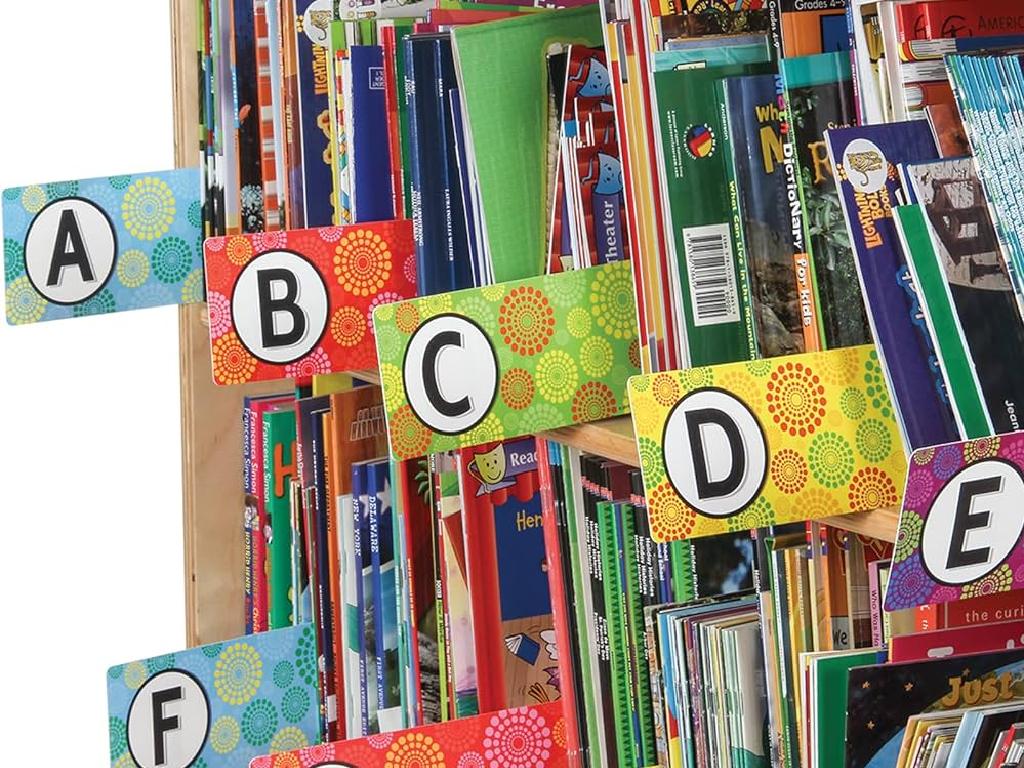Identify Oceans And Continents
Subject: Social studies
Grade: Fourth grade
Topic: Physical Geography
Please LOG IN to download the presentation. Access is available to registered users only.
View More Content
Exploring Earth’s Oceans and Continents
– Earth: A planet of oceans & continents
– 5 oceans & 7 continents
– Pacific, Atlantic, Indian, Southern, Arctic
– Oceans: The planet’s blue heart
– Oceans cover 71% of Earth’s surface
– Continents: Earth’s vast lands
– Asia, Africa, North America, South America, Antarctica, Europe, Australia
|
This slide introduces students to the basics of physical geography, focusing on the Earth’s oceans and continents. Start by explaining that Earth is unique because it has vast bodies of water and large landmasses. Highlight the names and numbers of the oceans and continents, emphasizing the Pacific Ocean as the largest and Asia as the largest continent. Discuss why oceans are crucial for climate regulation and marine life, and how continents are home to diverse ecosystems and cultures. This knowledge lays the groundwork for understanding global geography, environmental science, and the interconnectedness of the world’s ecosystems and human societies. Encourage students to think about the different animals and cultures that might exist in each continent or ocean.
Exploring Earth: Oceans and Continents
– What is Physical Geography?
– It’s the study of Earth’s natural features.
– Earth’s natural wonders
– Like mountains, rivers, and deserts.
– Today’s focus: Oceans & Continents
– We’ll learn the 5 oceans and 7 continents.
– Understanding our world
|
Begin the lesson by explaining what physical geography is, emphasizing that it’s the branch of geography dealing with natural features and processes. Provide examples such as mountains, rivers, and deserts to give students a clear idea of what constitutes Earth’s physical features. Today’s lesson will focus specifically on oceans and continents, which are the large bodies of water and landmasses on Earth. Engage the students by asking if they’ve visited or heard of any oceans or continents before. This will help them connect the lesson with their personal experiences and prior knowledge. The goal is to help students identify all five oceans and seven continents by the end of the lesson, enhancing their understanding of the world’s geography.
Exploring Earth’s Oceans
– Five main oceans on Earth
– Pacific, Atlantic, Indian, Southern, Arctic
– Oceans cover 70% of Earth
– They play a crucial role in Earth’s ecosystem
– Pacific Ocean is the largest
– It’s even bigger than all the continents combined!
– Oceans are key to geography
|
This slide introduces students to the concept of Earth’s oceans and their significance in physical geography. Emphasize that while there are many bodies of water on Earth, there are five oceans that stand out due to their size and the role they play in global ecosystems. Highlight that the oceans are vast, covering more than two-thirds of the planet’s surface, which affects climate and weather patterns. The Pacific Ocean, being the largest, holds a special place in geography and is an excellent example to show the scale of oceans. Encourage students to think about how oceans might affect life on Earth and human activities.
Exploring Earth’s Continents
– Seven continents on Earth
– Asia, Africa, North America, South America, Antarctica, Europe, and Australia
– Continents: large landmasses
– They are the main divisions of land on Earth
– Asia: the largest continent
– Asia is bigger than other continents
|
This slide introduces the concept of continents to the students. Begin by explaining that the Earth is divided into seven large landmasses known as continents. Each continent has its own unique geography, climate, and culture. Emphasize that Asia is the largest of all the continents, which can be a fun fact for the students to remember. Use a globe or a world map to point out each continent. You can also mention that continents are one of the very first ways geographers begin to organize information about the planet. Encourage the students to think about the different animals, plants, and landscapes that might be found on each continent as a way to make the information more relatable and engaging.
Exploring Our World: Oceans and Continents
– Locate oceans and continents
– We’ll find the 5 oceans and 7 continents on a globe or map.
– Use clues and facts for positions
– Remember: The Pacific Ocean is the largest; it’s like a giant blue blanket on the Earth!
– Activity: Map matching names
– Match each continent and ocean name to its place on the map.
|
This slide introduces the concept of identifying oceans and continents, which is a fundamental part of physical geography for fourth graders. Start by showing a world map and pointing out each of the five oceans and seven continents. Use memorable clues and fun facts to help students remember their locations, such as associating the size of the Pacific Ocean with a familiar object. The activity involves students matching the names of oceans and continents to their correct locations on a map, which reinforces their learning through interactive participation. For the activity, prepare cut-out names and a large map, or use an interactive digital map if available. Possible variations of the activity could include team competitions, timed challenges, or using clues to find the correct location.
Oceans and Continents: Their Impact
– Oceans/continents affect climate
– Oceans/continents shape culture
– Example: Sahara Desert’s climate
– World’s largest hot desert in Africa, influences nearby human activities.
– Example: Great Barrier Reef’s ecosystem
– Located in the Pacific, supports a diverse marine life affecting local culture.
|
This slide aims to help students understand the significant role that oceans and continents play in shaping the climate and culture of a region. Oceans can moderate climate, provide food, and influence weather patterns, while continents can have varied climates and cultures depending on their geography. The Sahara Desert, for example, creates a hot, dry climate that affects the way people live, travel, and trade in Africa. The Great Barrier Reef is a rich marine ecosystem that supports fishing and tourism, influencing the culture of people living in the Pacific region. Encourage students to think about how these vast physical features can impact daily life and the environment.
Class Activity: Create Your World Map
– Label oceans and continents
– Use the blank map template
– Find the outlines and write the names
– Share your maps with the class
– Discuss your observations
– What did you find interesting?
|
This activity is designed to help students apply their knowledge of geography by identifying and labeling the oceans and continents on a blank map. Provide each student with a blank map template and instruct them to write the names of each ocean and continent in the correct locations. Once completed, have students share their maps with the class to compare and discuss any interesting observations they made during the activity. This could include discussions about the size and placement of continents, the vastness of the oceans, or the relative positions of landmasses to one another. Encourage students to ask questions and engage in a dialogue about the physical layout of our world. This hands-on activity not only reinforces geographic knowledge but also promotes critical thinking and observational skills.
Geography Recap: Oceans and Continents
– Congratulations on learning geography!
– Appreciating our world through geography
– Geography connects us to different places and cultures
– Our planet’s diversity is incredible
– Think of the variety: deserts, mountains, cities, and forests
– Continents and oceans shape our Earth
|
This slide is meant to serve as a positive reinforcement for the students’ efforts in learning about the oceans and continents. It’s important to emphasize the value of understanding geography in fostering an appreciation for the diversity of our planet. Highlight how geography can bring us closer to understanding different landscapes and cultures. Encourage students to continue exploring the world around them and to remember the key points about the seven continents and five oceans they’ve learned. This recap solidifies their knowledge and prepares them for further exploration in social studies.

